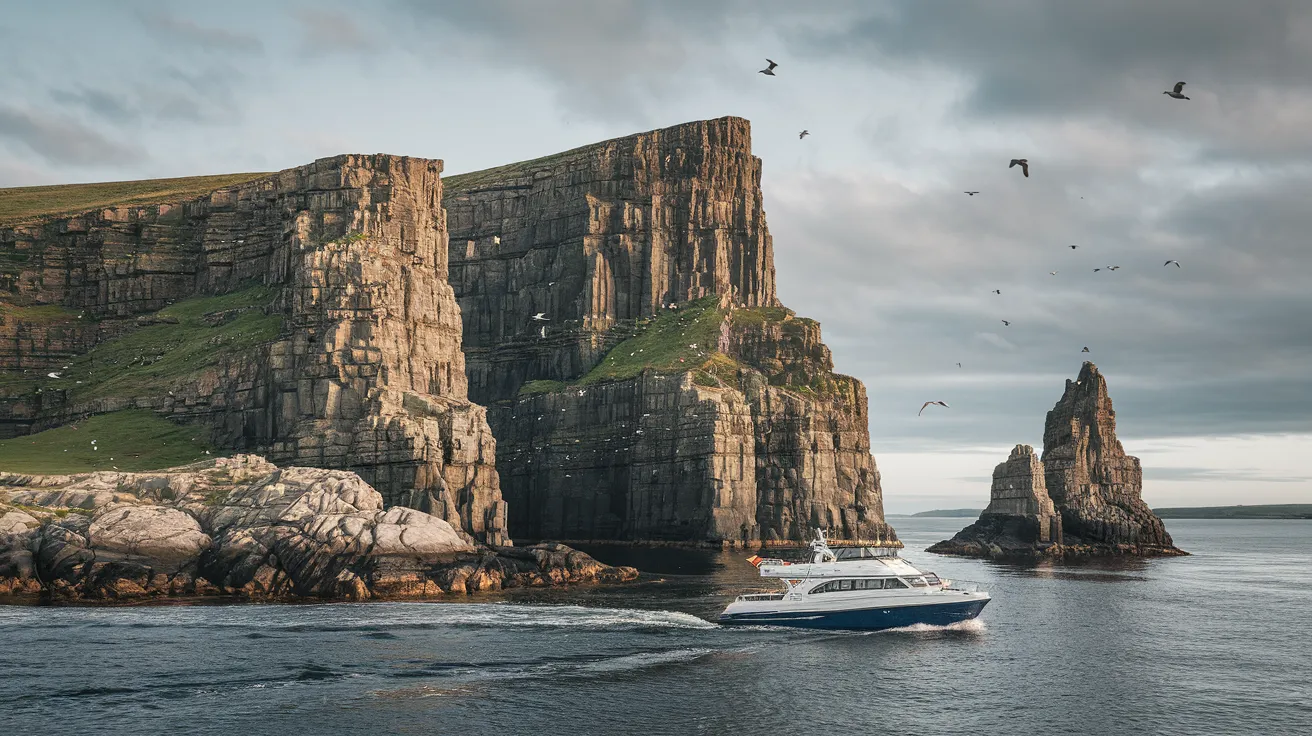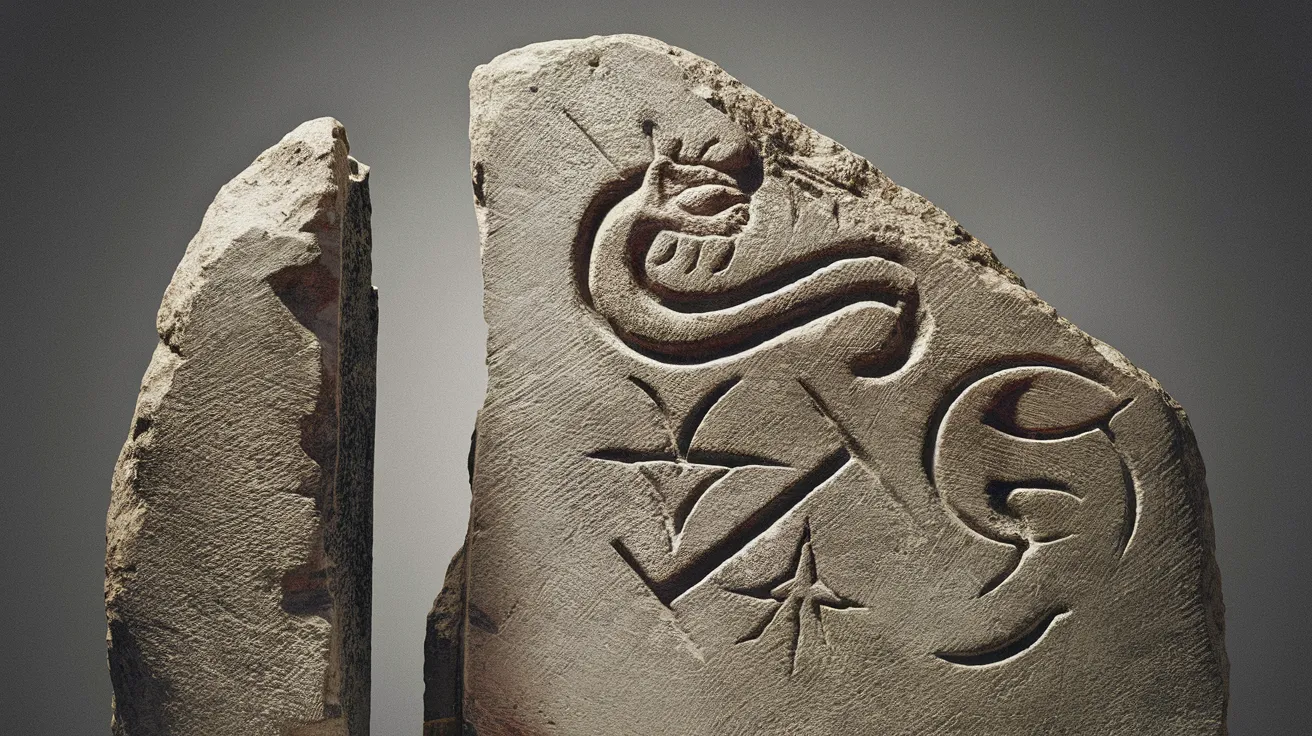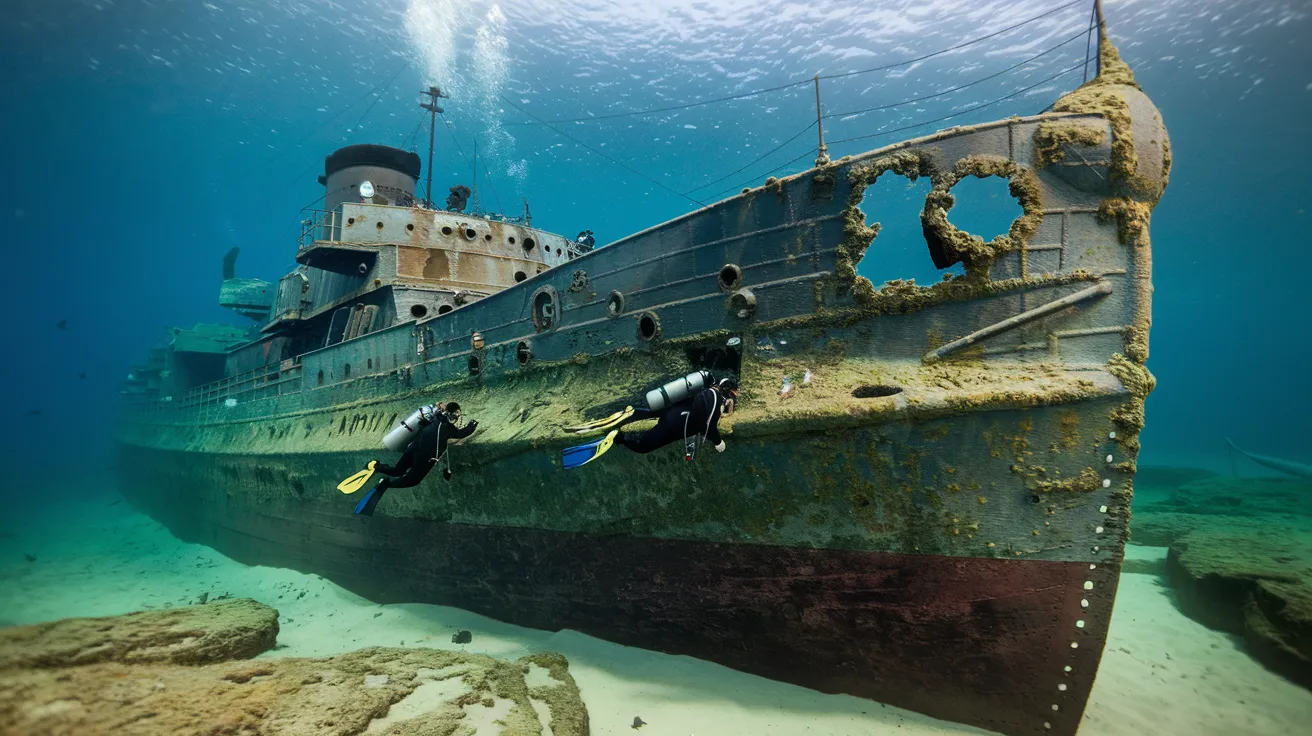Quick Navigation
- Orkney's Unique Photographic Appeal
- Top Photography Locations in Orkney
- Tips for Orkney Light and Weather
- Recommended Photography Gear
- Composition and Technique Tips
- Ethical Photography Considerations
- Frequently Asked Questions
- When is the best time to photograph Orkney?
- Do I need filters for Orkney photography?
- Is a tripod necessary?
- Where can I photograph puffins?
Orkney is a photographer's dream, a place where ancient history, dramatic landscapes, abundant wildlife, and extraordinary light converge. From the ethereal glow of the summer 'Simmer Dim' to the stark beauty of winter storms crashing against sea stacks, the islands offer endless opportunities for stunning images. However, capturing Orkney's essence requires preparation, understanding the unique conditions, and respecting the environment. This guide provides practical tips, location suggestions, and technical advice to help you make the most of your photographic journey through Orkney.
Orkney's Unique Photographic Appeal
What makes Orkney so special for photographers?
- The Light: Orkney's high latitude creates unique lighting conditions. The Simmer Dim around the summer solstice provides hours of soft, golden twilight perfect for landscapes. Winter offers low, dramatic light that accentuates textures, especially on ancient stonework. The rapidly changing weather also means dynamic skies and fleeting moments of incredible light are common year-round.
- Landscapes: Expect dramatic coastlines with towering cliffs (like Yesnaby and Marwick Head), sweeping sandy bays (Waulkmill, Skaill), rolling green farmland, and heather-clad moorland.
- Archaeology: The islands are scattered with incredibly photogenic prehistoric sites, including the standing stones of Brodgar and Stenness, the 5,000-year-old village of Skara Brae, and numerous chambered tombs and brochs.
- Wildlife: Orkney is a haven for seabirds (puffins, gannets, guillemots), seals, and potentially whales and dolphins. See our guide to Orkney marine life for spotting tips.
- Atmosphere: From the charming harbour towns of Kirkwall and Stromness to remote, windswept islands, Orkney offers a powerful sense of place and history.
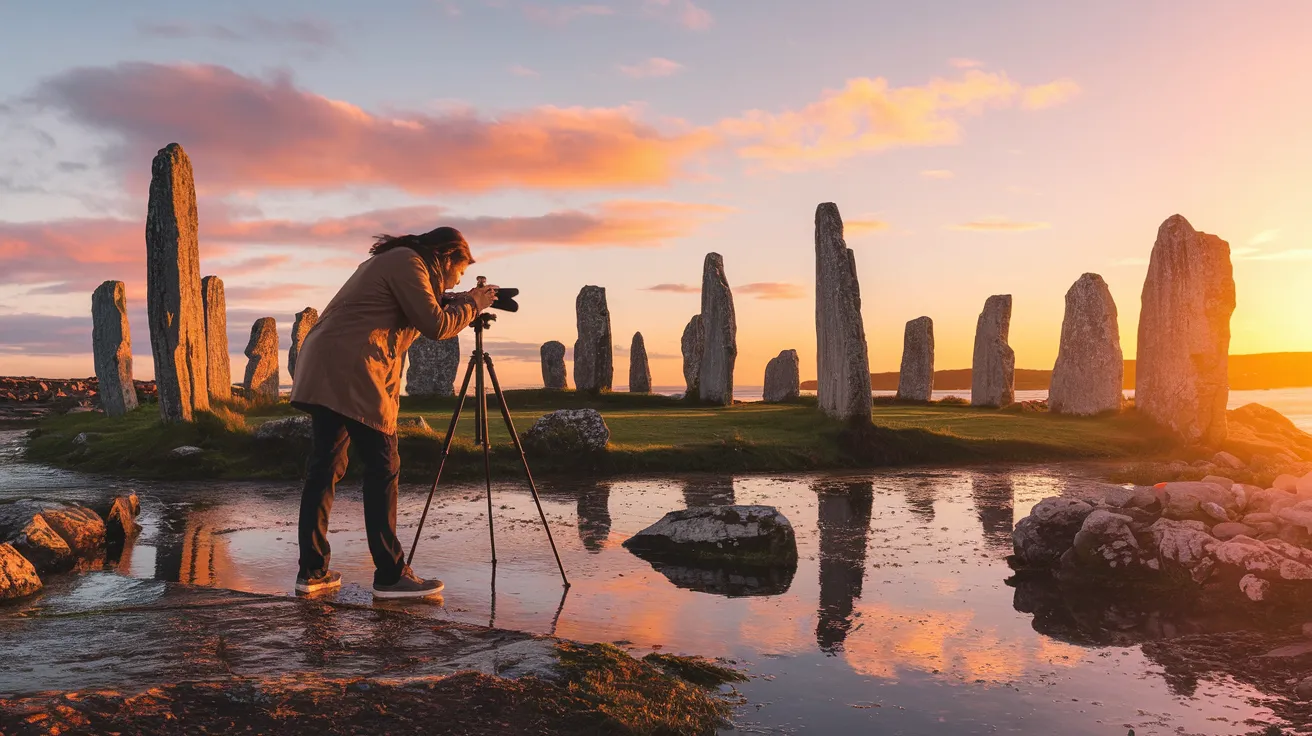
Top Photography Locations in Orkney
- Heart of Neolithic Orkney:
- Ring of Brodgar & Stones of Stenness: Best photographed at sunrise or sunset for dramatic silhouettes and warm light on the stones. The Simmer Dim offers unique opportunities for twilight shots.
- Skara Brae: Capture the ancient village dwellings against the backdrop of the Bay of Skaill, especially atmospheric in morning or evening light.
- Dramatic Coastlines:
- Yesnaby Cliffs: Famous for the Yesnaby Castle sea stack. Excellent for stormy seascapes (use long exposures!) and capturing geological details in the sandstone.
- Marwick Head: Ideal for seabird photography during summer (May-July) and panoramic coastal views incorporating the Kitchener Memorial.
- Brough of Birsay: A tidal island offering ruins, a lighthouse, and great potential for sunset shots over the Atlantic (check tide times!).
- Picturesque Towns & Villages:
- Stromness: Wander the narrow, flagstone streets for characterful shots of houses, piers, and harbour life. Particularly atmospheric on misty days.
- Kirkwall: Focus on St Magnus Cathedral (especially its sandstone details), the harbour, and the historic streets around the Earl's and Bishop's Palaces.
- Beaches & Bays:
- Waulkmill Bay: Known for its wide expanse of sand at low tide, offering reflections and patterns.
- Rackwick Bay (Hoy): A stunning bay surrounded by dramatic cliffs, offering moody landscape opportunities.
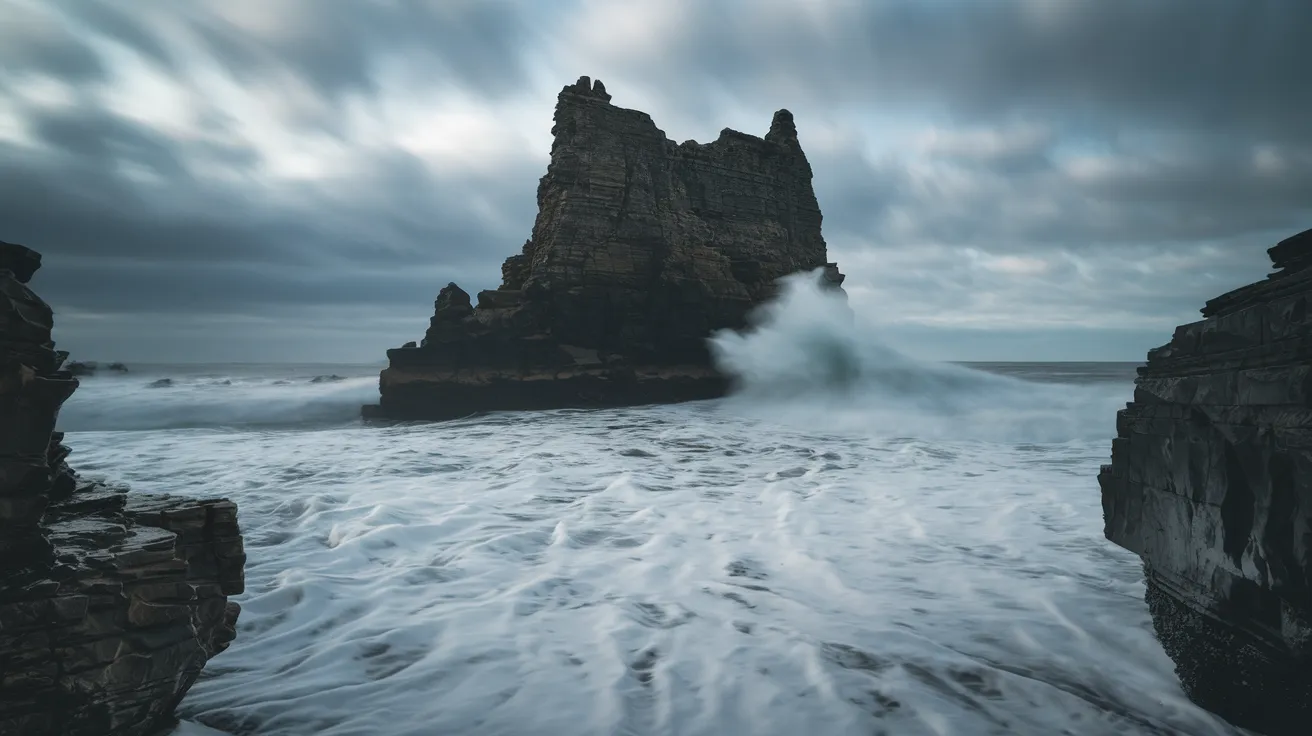
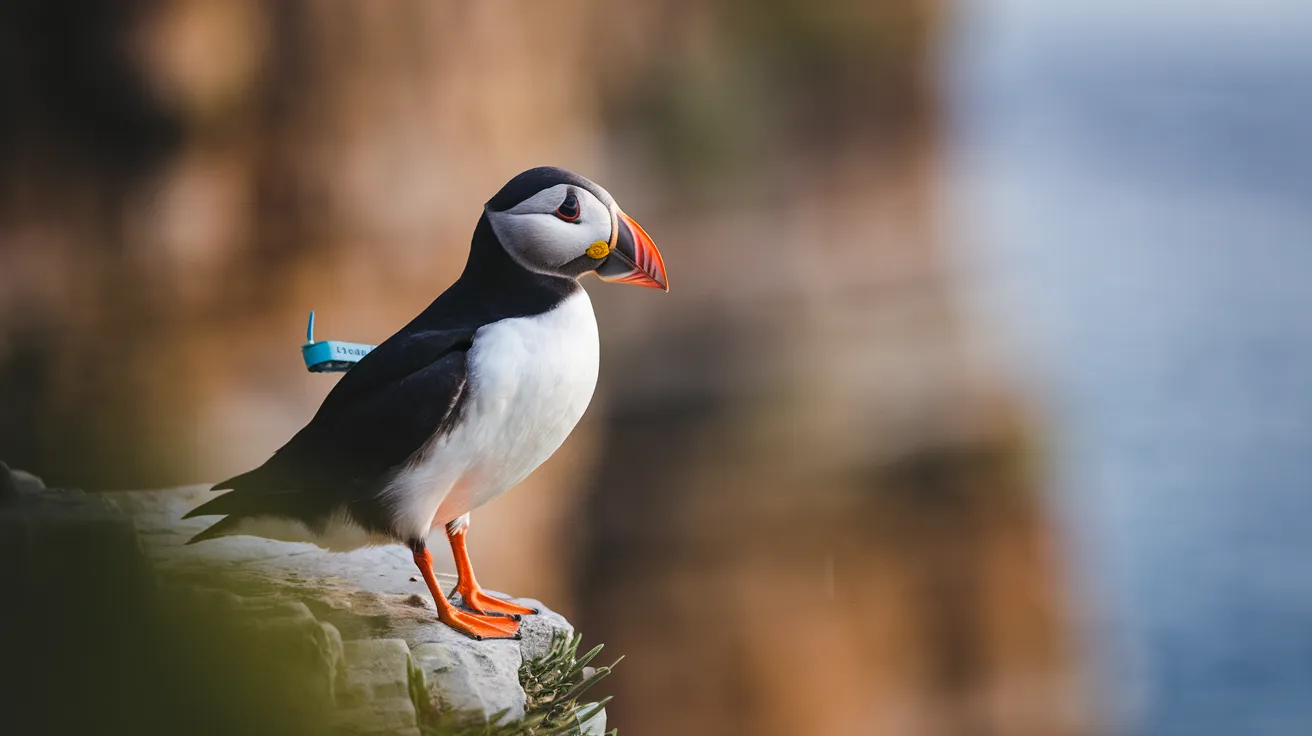
Tips for Orkney Light and Weather
- Be Prepared for Anything: Orkney weather is famously changeable. Pack waterproofs for yourself and your gear. Be ready for sun, rain, wind, and fog, sometimes all in one day!
- Use the Wind: While challenging, strong winds can create dramatic wave action and fast-moving clouds. Use a sturdy tripod and potentially weights. For wildlife, use fast shutter speeds (1/1000s+) to freeze motion.
- Mastering the Light: The 'golden hours' around sunrise and sunset are extended, especially in summer. The Simmer Dim provides soft, diffused light for hours around midnight in June/July. Winter light is low and directional, great for revealing texture.
- Filters are Your Friend:
- Neutral Density (ND) Filters: Essential for long exposures to blur water and clouds (6-stop or 10-stop recommended).
- Graduated ND Filters: Help balance bright skies with darker foregrounds.
- Polarising Filter: Reduces glare on water/wet rocks, enhances blue skies, and boosts colour saturation, especially useful on sandstone cliffs.
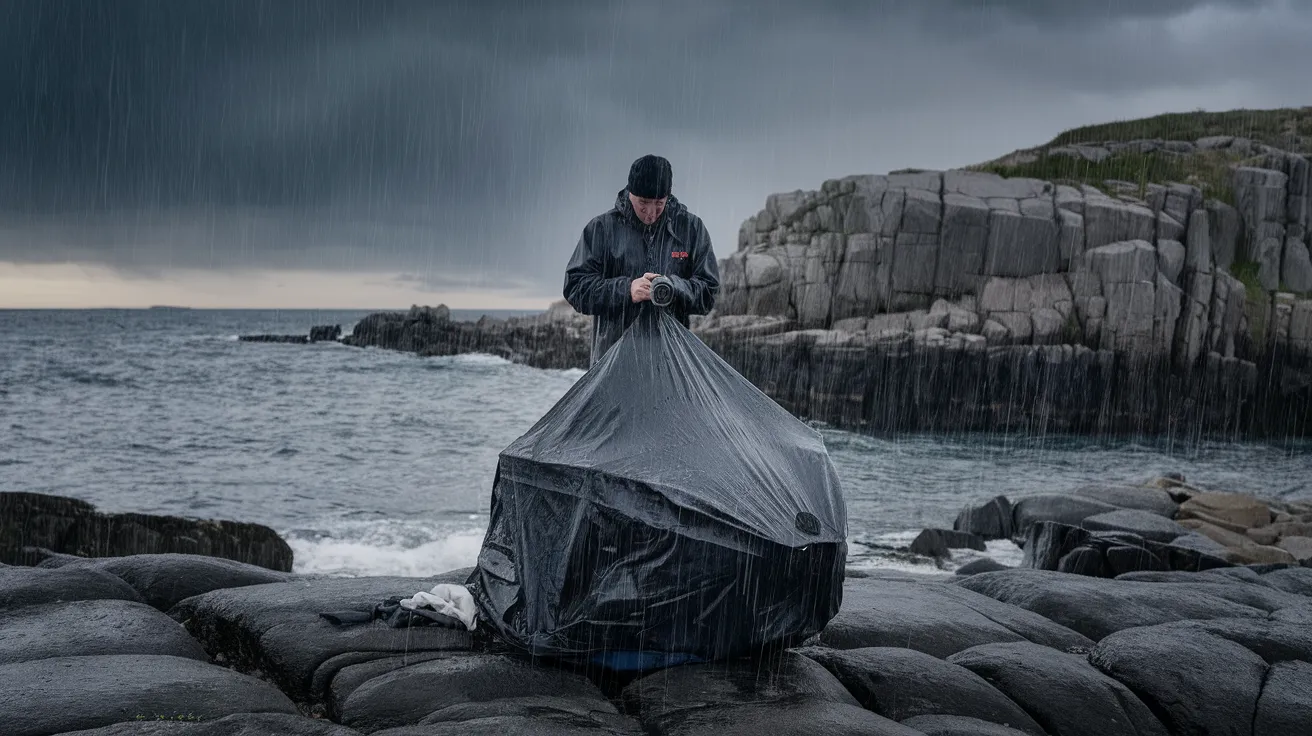
Recommended Photography Gear
- Camera: A DSLR or mirrorless camera with manual controls offers the most flexibility for varying light conditions. High-end smartphones can also capture great shots, especially landscapes.
- Lenses:
- Wide-Angle (e.g., 16-35mm or wider): Essential for landscapes, seascapes, and capturing the scale of stone circles.
- Telephoto Zoom (e.g., 70-200mm or 100-400mm): Crucial for wildlife (seabirds, seals) and compressing distant landscape elements.
- Standard Zoom (e.g., 24-70mm): A versatile option for general scenes and townscapes.
- Tripod: Absolutely essential for low light, long exposures, and stability in the wind. Choose a sturdy but portable model.
- Filters: ND, Graduated ND, and Polariser (as mentioned above).
- Weather Protection: Waterproof camera bag, rain covers for camera and lens, lens cloths.
- Extras: Spare batteries (cold drains them faster), memory cards, remote shutter release, headlamp (for dawn/dusk/night).
Composition and Technique Tips
- Landscapes: Use leading lines (paths, walls, shorelines), apply the rule of thirds, look for strong foreground interest (rocks, flowers), and consider scale by including a person (carefully).
- Wildlife: Get down to the animal's eye level for more engaging shots. Use continuous autofocus (AF-C) and burst mode for birds in flight. Be patient and observe behaviour.
- Archaeology: Use side-lighting (early morning/late evening) to reveal textures in stone. Isolate details like carvings with a shallow depth of field (wider aperture).
- Long Exposures: Use a tripod and ND filter to capture movement in water (silky effect) or clouds (streaks). Experiment with exposure times from 1 second to several minutes.
Ethical Photography Considerations
- Wildlife: Maintain a respectful distance, especially from nesting birds and seal pups. Use a telephoto lens rather than approaching too closely. Never feed or bait animals. Avoid using flash on wildlife. Follow the Scottish Marine Wildlife Watching Code.
- Landscape & Sites: Stick to marked paths to avoid damaging fragile vegetation or archaeological features. Respect private land – seek permission if necessary. Do not climb on ancient monuments.
- Drones: Be aware of regulations. Flying drones near airports, protected wildlife sites (like RSPB reserves), and large gatherings may be restricted or prohibited. Check local guidelines from Orkney Islands Council and the Civil Aviation Authority (CAA).
To find relevant videos, search YouTube for "Orkney landscape photography" or channels like Thomas Heaton or Nigel Danson who may have visited.
Frequently Asked Questions
When is the best time to photograph Orkney?
Each season offers unique opportunities. Summer has the Simmer Dim and puffins. Autumn brings dramatic storms and migrating birds. Winter offers low, atmospheric light. Spring sees wildflowers and returning birds.
Do I need filters for Orkney photography?
While not essential, ND filters (for long exposures) and a polariser are highly recommended to make the most of coastal and landscape opportunities.
Is a tripod necessary?
Yes, highly recommended for landscape work, especially in low light (dawn/dusk/Simmer Dim), for long exposures, and for stability in windy conditions.
Where can I photograph puffins?
Marwick Head on the Mainland, Noup Head on Westray, or the Brough of Birsay are good spots during the breeding season (approx. May-July).
Orkney offers a lifetime of photographic possibilities. By preparing for the conditions, understanding the light, and exploring its diverse locations with respect, you can capture truly memorable images of these extraordinary islands. Find your perfect photographic base from the wide range of Orkney accommodation available.

